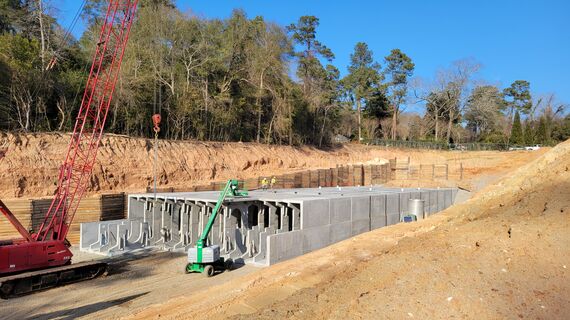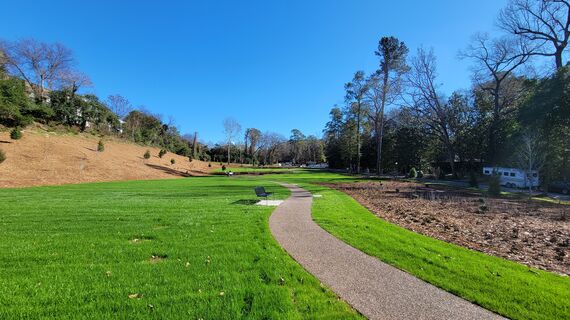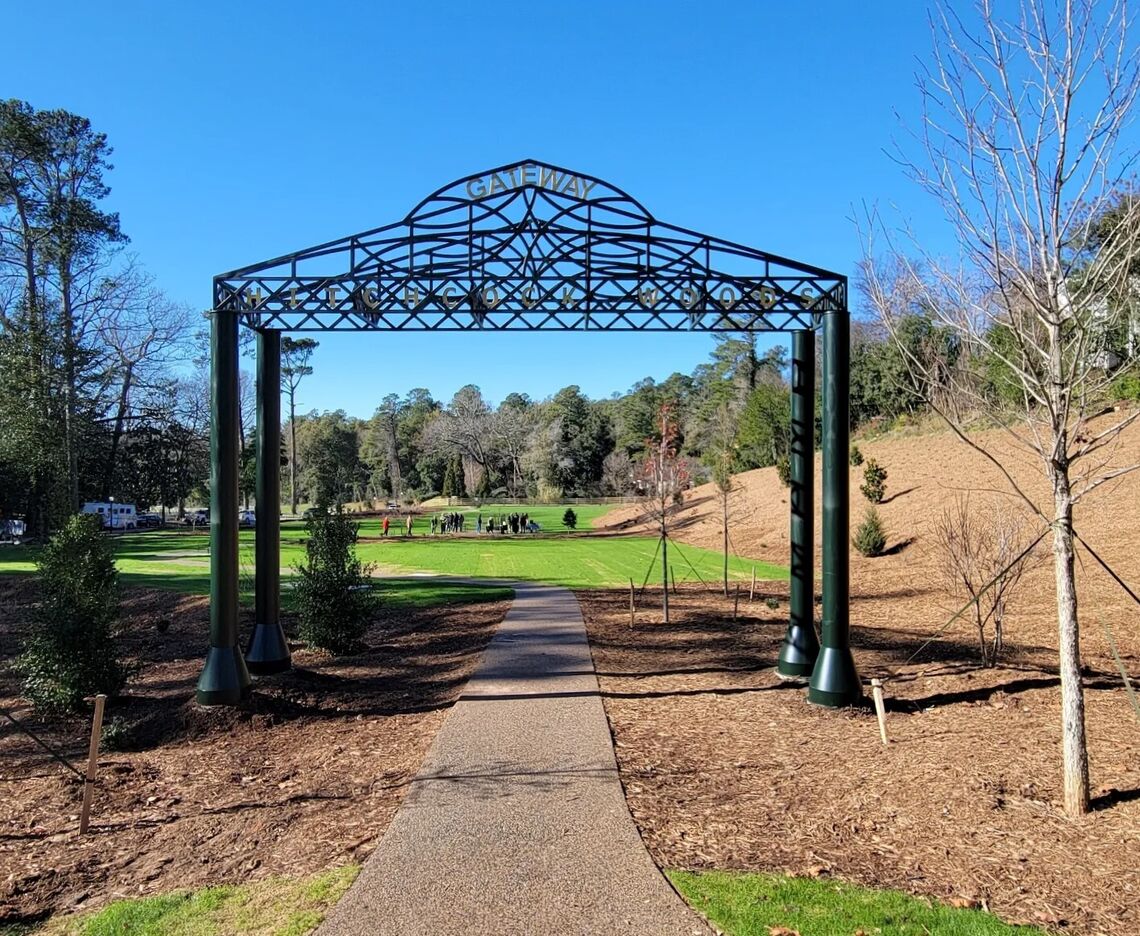
SAND RIVER STORMWATER IMPLEMENTATION PLAN
AIKEN, SC
McCormick Taylor prepared the Sand River Stormwater Implementation Plan to help the City overcome decades-long, destructive stormwater runoff into the Sand River in Aiken, SC.
THE CHALLENGE
Stormdrains within the City of Aiken have been collecting and discharging stormwater runoff into Hitchcock Woods for decades. Directed and discharged into the Sand River at a high volume and velocity after every rain, the stormwater carves sand canyons in some spots and topples trees in others.
In the absence of any significant stormwater management alternatives, combined with the City of Aiken’s growth since 1950, the sheer volume and velocity of stormwater runoff being directed and discharged into the Woods has grown to a devastating level. One rain event discharged 35 million gallons of stormwater runoff into the Woods through a 10-foot-diameter pipe in a nine hour period, and at its peak, at a rate of 100,000 gallons per minute.
Damage to the Woods caused by urban stormwater runoff includes:
- Massive Erosion: Woods real estate is lost after every rain. An area once passable by foot has been eroded into a 70-foot high and 25-foot wide canyon. Other areas in the Woods are in danger of becoming canyons of this scale.
- Sedimentation: Silt and sediment from large-scale erosion have smothered and killed many bottomland hardwood trees and have filled in and destroyed wetlands in the Woods.
- Pollutants: Urban stormwater runoff picks up and flushes trash, chemicals, sediment, and bacteria into the Woods that is harmful to its health, ecology, and pristine beauty.
- Impeding Management: Woods areas eroded from stormwater runoff are so fragile that invasive species cannot be mitigated in these areas until the damage ceases and healing can begin.
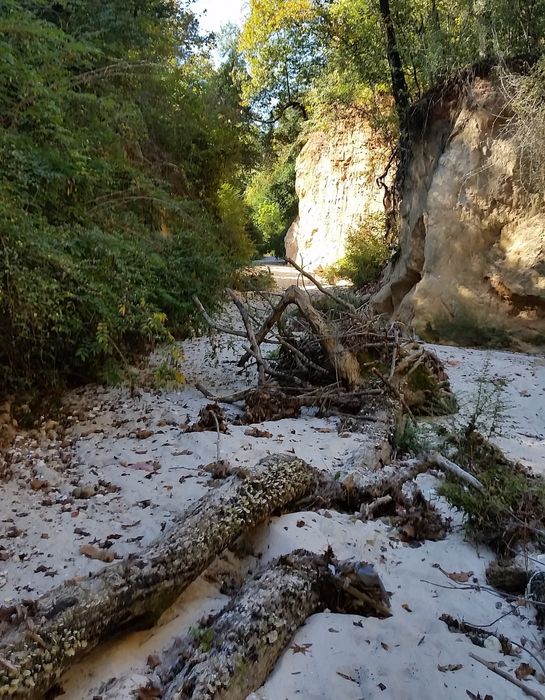
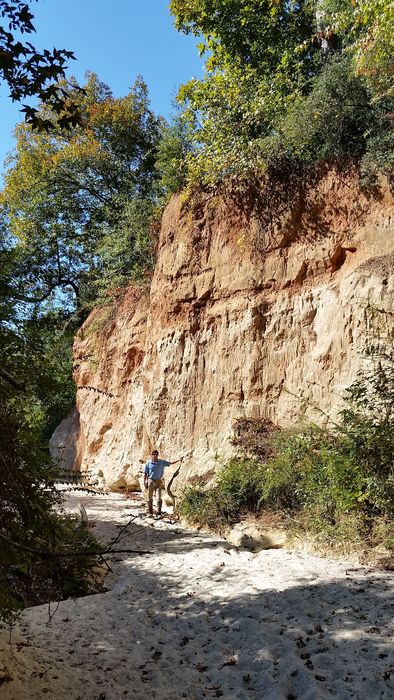
HOW WE HELPED
McCormick Taylor prepared a Stormwater Implementation Plan that identified over 20 potential capital improvement projects that could be installed to reduce the destructive runoff into the Sand River. The Implementation Plan evaluated and ranked these sites, separating the proposed stormwater best management practices into four “design packages.” These design packages contained stormwater facilities located throughout the watershed and when completed would obtain the approximate 58 acre-feet of stormwater storage needed to implement stormwater volume control of the 10-year storm event.
During the development of the Implementation Plan, McCormick Taylor facilitated meetings of the Hitchcock Woods stormwater task force, which was comprised of elected officials, city staff, private citizens, and members of the Hitchcock Woods Foundation. The goal of the task force was to develop a shared solution to cease the destruction of the Sand River within the Hitchcock Woods.
McCormick Taylor was also responsible for:
- Conducting technical evaluations to support planning and design related to stormwater best management practices and other related project concepts
- Conducting and overseeing field investigations, stormwater sampling, and stream flow monitoring
- Performing technical analyses, including hydrologic and hydraulic modeling, statistical analyses, water quality investigations, GIS mapping, and data management using the previous studies contracted by the City
RESULTS
In 2020, McCormick Taylor commenced design on one of the recommended projects which provides approximately 25 acre-feet of stormwater storage within the Sand River watershed. McCormick Taylor recommended the use of forecast-based real-time control technology, also called continuous monitoring and adaptive control (CMAC), to be installed on a set of underground vaults. These vaults are positioned at the downstream end of Aiken’s Sand River urban watershed, just upstream of major erosion in Hitchcock Woods. CMAC was estimated to increase the effectiveness of the vaults by 2-3x by retaining water during and after storms, increasing infiltration, and only discharging in preparation for forecast storm events exceeding the capacity of the vaults. The 15-foot interior high vaults will infiltrate smaller storm events and during larger events that exceed the vault's storage capacity will act as a traditional detention system. McCormick Taylor partnered with OPTI RTC and StormTRAP during the design process.
In addition to the stormwater management BMPs, a passive park was built overtop these facilities as part of the site restoration. The area contains pervious rubber sidewalks, demonstration pollinator gardens, and a rain garden, as well as educational signage that depicts the history of Aiken and the Hitchcock Woods. The signage also pays homage to the historical railroad inclined plain that was located only a few 100 yards from the project site and the stormwater system buried underground at this location.
AWARDS
2025 P.R.I.S.M. Award, NAEP-SC
2024 Engineering Excellence Award, ACEC/SC
2022 President's Award, ASCE South Carolina
2022 Achievement Award, Municipal Association of South Carolina
